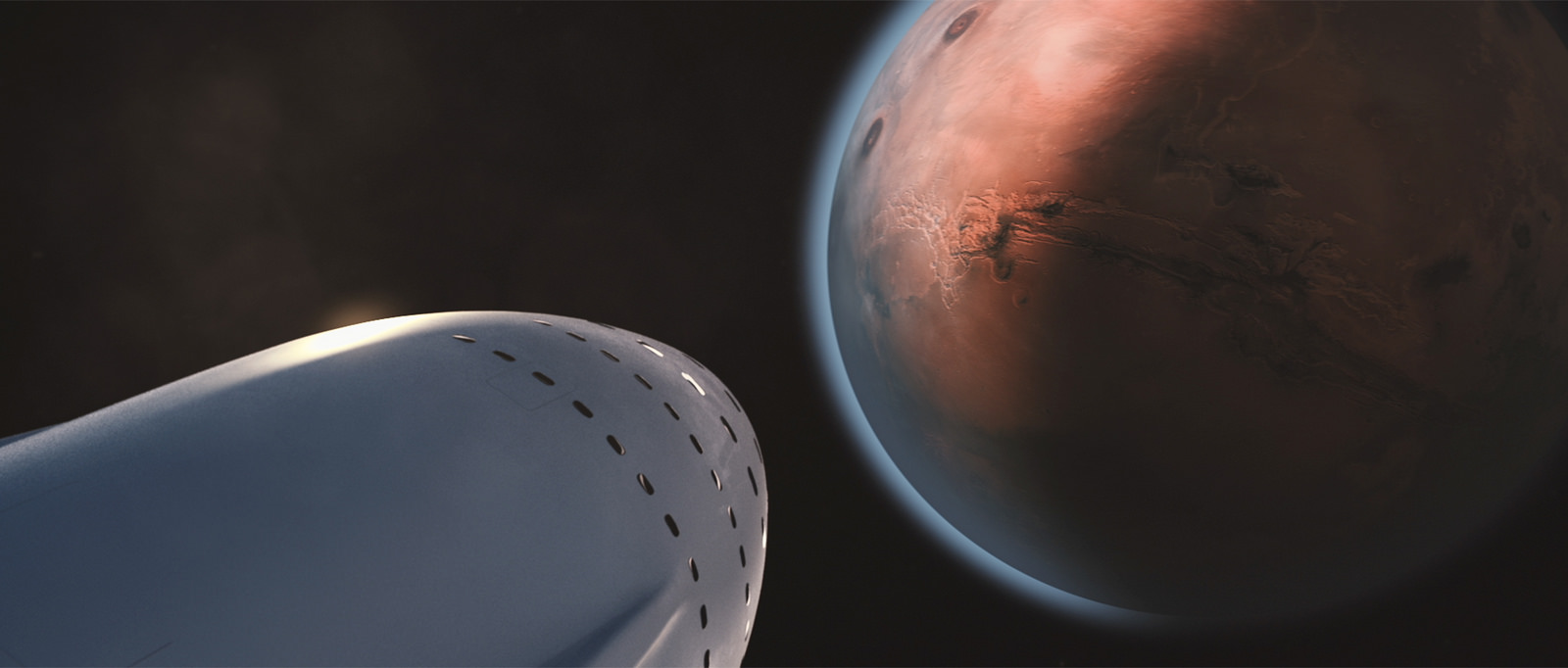SpaceX's Mars Colony Plan: How Elon Musk Plans to Build a Million-Person Martian City
Elon Musk has put his Mars-colonization vision to paper, and you can read it for free.
SpaceX's billionaire founder and CEO just published the plan, which he unveiled at a conference in Mexico in September 2016, in the journal New Space. Musk's commentary, titled "Making Humanity a Multi-Planetary Species," is available for free on New Space's website through July 5.
"In my view, publishing this paper provides not only an opportunity for the spacefaring community to read the SpaceX vision in print with all the charts in context, but also serves as a valuable archival reference for future studies and planning," New Space editor-in-chief (and former NASA "Mars czar") Scott Hubbard wrote in a statement. [SpaceX's Interplanetary Transport for Mars in Images]
Musk's Mars vision centers on a reusable rocket-and-spaceship combo that he's dubbed the Interplanetary Transport System (ITS). Both the booster and the spaceship will be powered by SpaceX's Raptor engine, still in development, which Musk said will be about three times stronger than the Merlin engines that power the company's Falcon 9 rocket.
The booster, with its 42 Raptors, will be the most powerful rocket in history, by far. It will be capable of launching 300 metric tons (330 tons) to low Earth orbit (LEO), or 550 metric tons (600 tons) in an expendable variant, Musk said. For comparison, NASA's famous Saturn V moon rocket, the current record holder, could loft "just" 135 metric tons (150 tons).

ITS rockets will launch the spaceships to Earth orbit, then come back down for a pinpoint landing about 20 minutes later. And "pinpoint" is not hyperbole: "With the addition of maneuvering thrusters, we think we can actually put the booster right back on the launch stand," Musk wrote in his New Space paper, citing SpaceX's increasingly precise Falcon 9 first-stage landings.
The ITS boosters will launch many spaceships and fuel tankers (which will top up the spaceships' tanks) to orbit over the course of their operational lives; the rockets will be designed to fly about 1,000 times each, Musk wrote. The spaceships, meanwhile, will hang out in orbit, and then depart en masse when Earth and Mars align favorably. This happens once every 26 months.
Get the Space.com Newsletter
Breaking space news, the latest updates on rocket launches, skywatching events and more!
Eventually, Musk wrote, he envisions 1,000 or more ITS spaceships, each carrying 100 or more people, leaving Earth orbit during each of these Mars windows. The architecture could conceivably get 1 million people to Mars within the next 50 to 100 years, he has said.
The ships would also fly back from Mars, using their nine Raptor engines and methane-based propellant that was manufactured on the Red Planet. Each ITS ship would probably be able to make 12 to 15 deep-space journeys during its operational life, Musk wrote, and each fuel tanker could likely fly to Earth orbit 100 or so times.
The ITS' reusability is key to making Mars colonization affordable. This reusability — combined with other measures, such as fueling the spaceships in Earth orbit and making propellant on Mars — could bring the price of a Red Planet trip down to $200,000 or so per person, from an estimated $10 billion using conventional spaceflight systems, Musk said.
ITS spaceships could begin flying to Mars about 10 years from now, if everything goes well, Musk added. But he acknowledged that success is far from guaranteed.
"There is a huge amount of risk. It is going to cost a lot," Musk wrote. "There is a good chance we will not succeed, but we are going to do our best and try to make as much progress as possible."
And SpaceX has a history of overcoming long odds. When Musk founded the company in 2002, he wrote, "I thought we had maybe a 10 percent chance of doing anything — of even getting a rocket to orbit, let alone getting beyond that and taking Mars seriously."
You can download a free copy of Musk's Mars paper here: http://online.liebertpub.com/doi/full/10.1089/space.2017.29009.emu
Follow Mike Wall on Twitter @michaeldwall and Google+. Follow us @Spacedotcom, Facebook or Google+. Originally published on Space.com.
Join our Space Forums to keep talking space on the latest missions, night sky and more! And if you have a news tip, correction or comment, let us know at: community@space.com.

Michael Wall is a Senior Space Writer with Space.com and joined the team in 2010. He primarily covers exoplanets, spaceflight and military space, but has been known to dabble in the space art beat. His book about the search for alien life, "Out There," was published on Nov. 13, 2018. Before becoming a science writer, Michael worked as a herpetologist and wildlife biologist. He has a Ph.D. in evolutionary biology from the University of Sydney, Australia, a bachelor's degree from the University of Arizona, and a graduate certificate in science writing from the University of California, Santa Cruz. To find out what his latest project is, you can follow Michael on Twitter.









